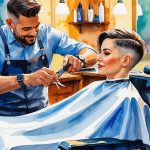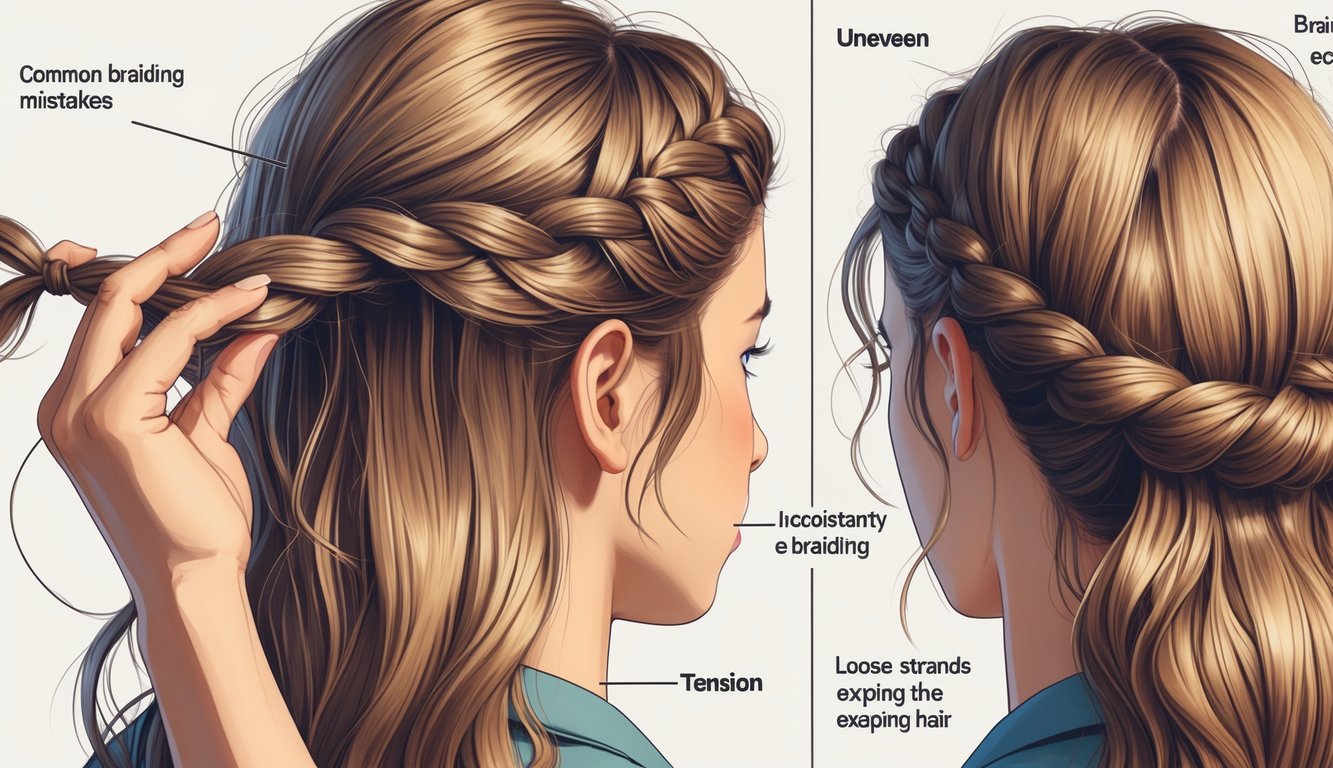
Adapting Your Braiding Technique to Hair Type
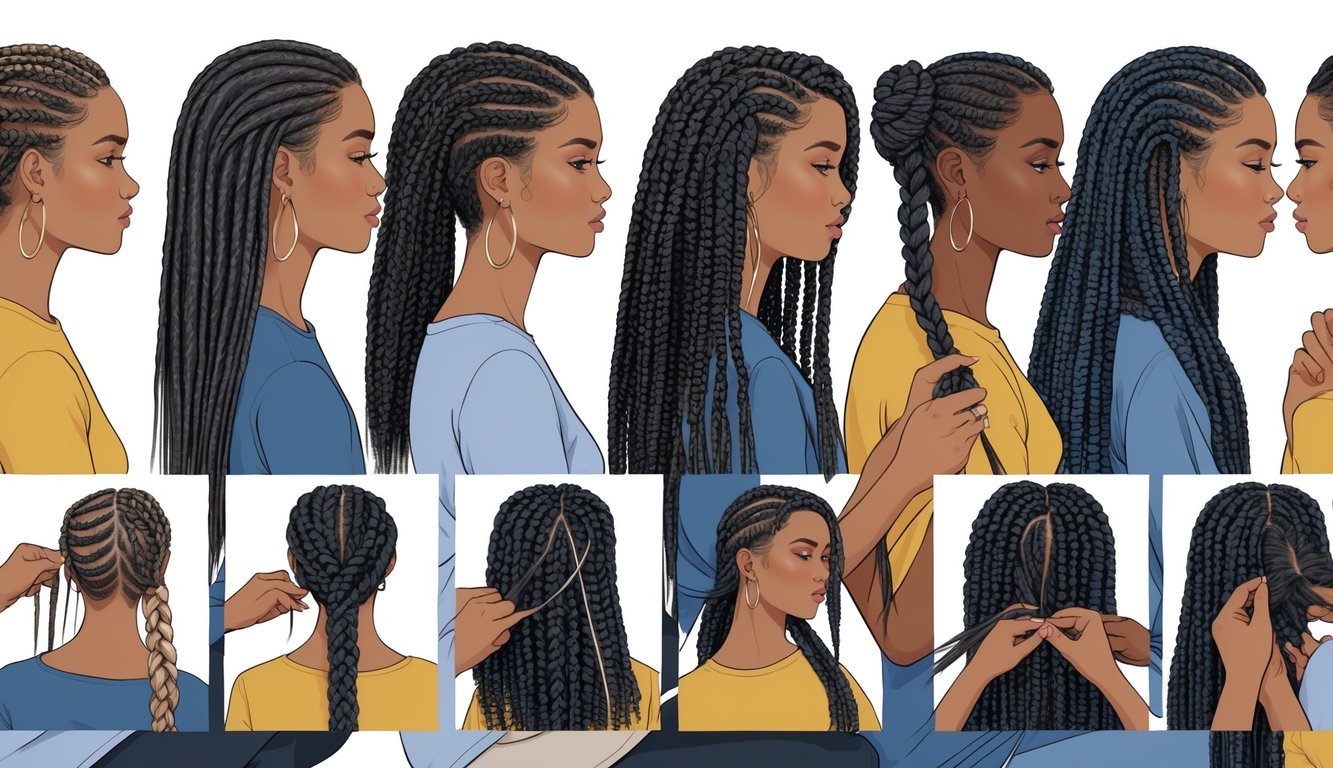
After all these years, you’d think I’d have figured out my hair type. Nope. Still switching products, still dealing with slipping chunks and random frizz. “One-size-fits-all” for braiding? Not in this universe. Most of my mistakes? They’re all about ignoring my own texture.
Fine vs. Coarse Hair Approaches
So, sectioning, tension, all that—this salon guide says too much pressure on fine hair is a recipe for pain, but braid coarse hair too loose and it falls apart before lunch. I’ve yanked fine strands tight and ended up with zig-zag parts—super cute, right? Not.
Here’s what finally clicked: mousse for volume on fine hair (Ann Jackson, trichologist, swears by it, and honestly, she’s right), but with coarse hair, I have to oil it or I look like I stuck a fork in an outlet. Micro-elastics? They’re basically hair traps. Detangling spray is my hero. The order matters—mousse before detangling, not after. With fine or coarse hair, there’s no margin for error. Skip a step, and your ends will betray you in public.
Managing Natural vs. Chemically Treated Hair
Natural curls eat product. No, really. If I try to part dry, unmoisturized hair, it protests—loudly. I’ve snapped more combs than I care to admit. Stylists say never dry-braid bleached or relaxed hair without leave-in. I forget, obviously, and then my braids look dusty by day three.
Sectioning with silk scrunchies helps, but I still wake up looking like I’ve been in a wrestling match. Heat-treated hair? Split ends travel up the braid while I’m working. Anti-breakage serum is non-negotiable. Every pro says braiding stresses processed hair the most, and there’s even a study (International Journal of Trichology, 2022) showing protein loss. So, sure, now I count every strand in the shower and regret last year’s bleach experiments.
How to Prevent and Fix Frizz in Braids
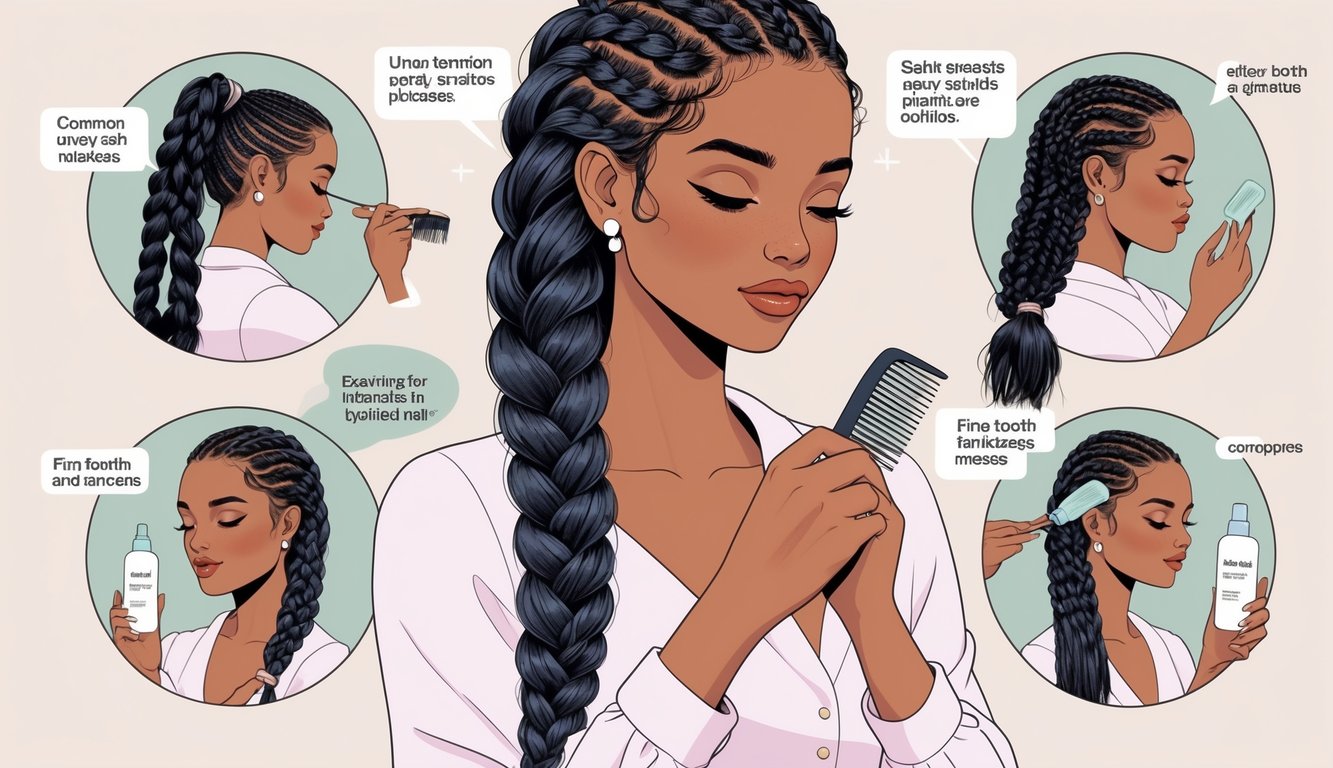
I tug on a braid and—surprise!—fuzz everywhere. Static, little hairs, chaos. Nobody warns you that dry shampoo and scarves are the real MVPs for not looking like you got caught in a tornado. Miss one step, and it’s frizz city.
Using Dry Shampoo Effectively
Dry shampoo: I used to hate it. My roots felt greasier after, somehow? But then this stylist—seriously, her hands move like she’s got four—showed me how to spray it from a distance, not up close. Game changer. Batiste is everywhere, but Klorane’s oat milk one is the only thing my scalp doesn’t hate. Too much product, especially on synthetic hair, and I’m flaking everywhere. Volumizing dry shampoo? Nope. Just more friction, more frizz.
I focus dry shampoo right on the part lines—never the ends. Trying to “refresh” the ends is like dumping flour on pasta. Why? It’s just sticky and weird. Heavy sprays? No thanks. If you get powder in your eyes, you’ll look haunted for a week.
Finishing With a Silk Scarf
I used to think cotton pillowcases were fine—like, how bad could it be? Turns out, every time I skip the silk scarf, I wake up with twice the frizz. Stylists (see: The List) love those smooth scarf wraps, but nobody ever mentions how silk feels cooler than half my sheets.
I wrap my scarf tight and knot it at the base. If it slips off, so does my style. Satin works, but silk is easier to wash and doesn’t get weird. If I skip it, I wake up with static and regret. Silk keeps the cuticle flat, and honestly, my hair looks shinier—even if science hasn’t caught up to me yet.
Pro tip: tuck all the ends in, and skip the bobby pins unless you want breakage. My scarf always ends up around my neck by morning, but if it stays on, the difference is wild. Now, if only silk could fix my attitude before coffee.
Mastering Specific Braiding Styles
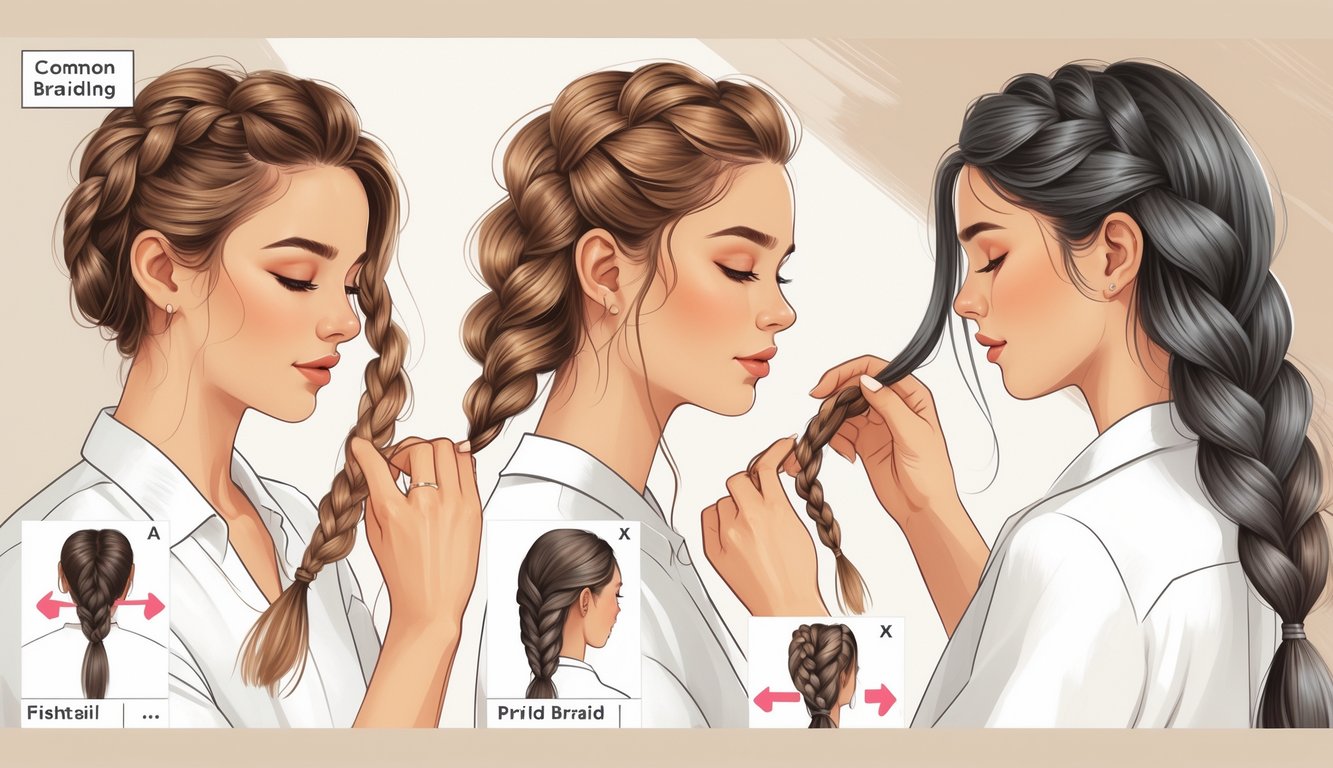
I’m trying to braid while doomscrolling, and honestly, that’s not even the hard part. Nobody tells you about the unraveling at the end, or how your hands will cramp halfway through. “Just practice”—sure, and my elastics still snap, and symmetry is a distant dream.
Classic Braid Essentials
Classic braid: three strands, easy, right? Lies. I stare in the mirror, wrestling with layers and old product. Stylists always talk about “even tension,” but dirty hair actually works better than squeaky clean. I read somewhere (Sam Villa, I think) that all textures can be braided, but they never mention how humidity turns my hair into a frizz helmet.
Getting three even sections? Never happens. My left hand gives up, my right drops a section, and suddenly my braid is a sideways lump. Sectioning clips (the cheap metal ones) are the only reason I survive. Frayed ends? Dab of serum. Not oil—learned that the hard way. The big secret: relax your grip. If you death-clutch the braid, you’ll get weird creases.
Dutch Braid Troubleshooting
Dutch braid, aka “reverse French braid,” is supposed to be basic. I watch a YouTube tutorial and end up in a tangle. “Just add hair every step, go under, not over”—easier said than done. This step-by-step says tension is key, but if you’re grabbing random hairs or losing track of your hands, good luck.
Halfway through, I forget which strand is which. My knuckles hurt. Stylists argue about hand positions—palms up, knuckles down, whatever. I just try not to drop anything. Dry, tangle-free hair is best, but then static happens, so I swipe a dryer sheet over my hands or mist with water from a $2 travel bottle.
Keep your part lines sharp. I use a tail comb, but don’t stab yourself (I did, it’s not fun). If the braid droops, I undo back to the last neat cross and try again. Pulling tighter just ruins the “pancake” look everyone wants for Instagram. And, honestly, sometimes I just give up and wear a hat.

